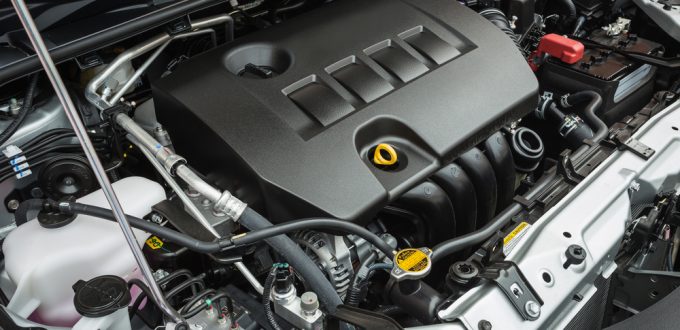Our modern, 21st-century world runs on a number highly complex motors and machines, yet most of us don’t have the slightest idea of how these things work.
Case in point: The car engine. We usually leave it up to the mechanic to fix things in our engines or tell us how to proceed when things go wrong.
But how a car’s engine works is interesting, and it’s a reminder of how remarkable these machines truly are.
We’ll spare you the physics and the engineering equations below and give you an general overview of what’s going on under the hood.
The big picture
The internal combustion engine works off the idea that if you take a small amount of high-energy fuel, such as gasoline, and inject it into a small, closed area like the cylinder, then the gasoline and the air it is mixed with will expand when ignited and release a massive amount of energy. If created continually, this energy can push pistons up and down, turn gears, cause the axle to spin and turn the wheels.
At the heart of how most engines run is the four-stroke combustion cycle.
A breakdown of a four-stroke engine
True to its name, there are four “strokes” to the four-stroke engine cycle. This cycle is also often called the Otto cycle, after Nicolaus Otto, the inventor of the four-stroke engine.
- The intake stroke. Air, mixed with a tiny drop of gasoline, is injected into the cylinder. At this point, the piston is positioned at the top of the cylinder. As the fuel mixture fills the chamber, the piston lowers to allow the cylinder to fill with the maximum amount of fuel.
- Compression stroke. The counter-balanced weight on the crankshaft essentially “rights” itself and pushes the piston back up, thereby compressing the gas and air mixture. Think of this part like pushing a jack-in-the-box back into its small space. A lot of energy is now stored in a compact area and is ready to be released.
- Power stroke. An electric spark from the spark plug ignites the fuel mixture, forcing the piston downward.
- A valve opens to expel the exhaust that is produced by the “explosion.”
This process of continual fuel injection, oxygen intake, sparks and explosions causes the cylinders to push and pull at the crankshaft, which transfers the energy of the engine to the wheels. Simpler yet: The whole point of the four-stroke cycle is to turn a rod enough so it will spin gears and turn your wheels.
To achieve this, the four-stroke cycle repeats hundreds of times each minute.
You know that RPM gauge on your dashboard? If you’re at 2,000 RPM, for example, the crankshaft is turning 2,000 times each minute, which is 40 full rotations each second. If you have a four-cylinder engine, this means each cylinder is going through a four-stroke cycle ten times each second.
Cooling
You’re probably wondering how your car keeps from overheating or exploding in flames. After all, the amount of heat given off by an engine on the freeway could keep two mid-sized houses warm.
The secret is engine coolant. Through a system of fluid channels, the coolant fluid surrounds the cylinders and other parts of the engine, effectively “absorbing” the heat. The hot liquid is then pumped back into the radiator where it passes through tubes, so the engine fan can cool it off; then, it’s ready to be cycled through the process again.
Of course, this is just a simplified picture of how an engine works. But as you can see, if you take the time to break down the functions and components of an automotive engine, how it works is no longer a mystery.
If you want to learn more, the best thing you can do is to dig in there yourself. Find a salvage auction or get together with some friends to rebuild an auction car. You’ll probably find that learning how a car works is a truly satisfying adventure.







